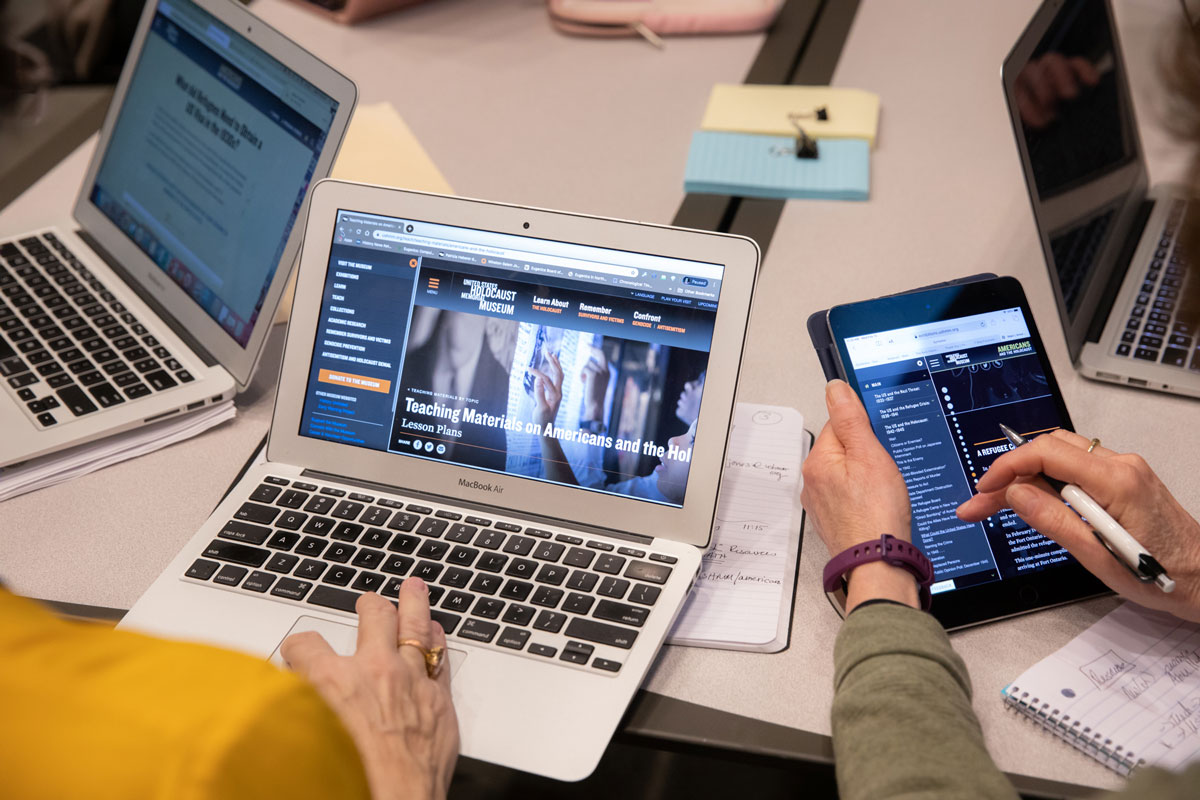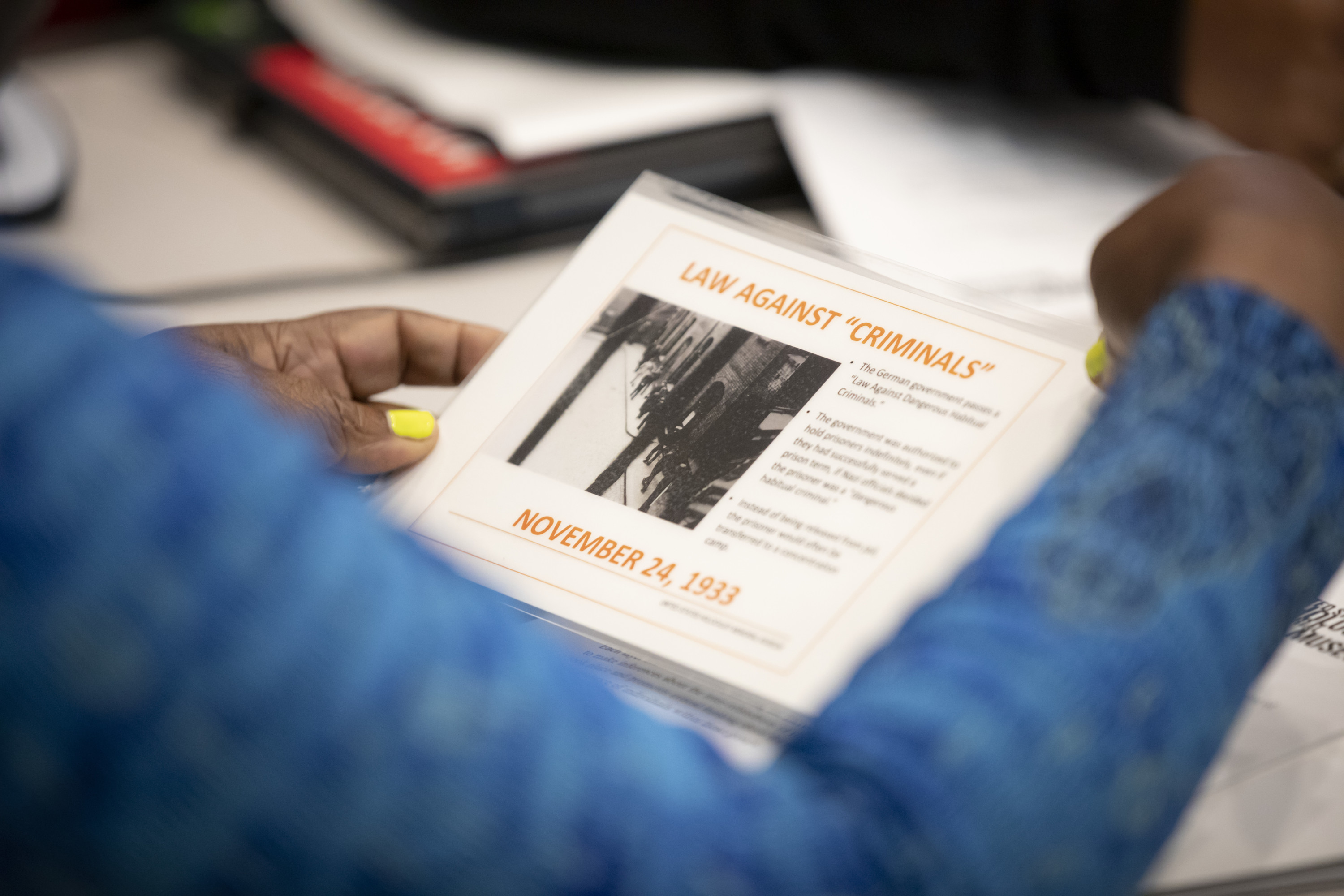The lessons below are compatible with learning management systems or web browsers for students to complete individually or as a class.
How to Use the Lessons
Each lesson includes a link as well as SCORM files to upload into your LMS. Please preview the lesson before assigning to your students. A PDF of the original lesson plan is available to use as a guide. The original lesson plan PDFs include questions for class discussion. These have been adapted into the online lessons as questions to “Consider and Discuss.” You may encourage your students to take notes for these prompts to be discussed at another time or in a different format.
To use with your LMS, download the files below and follow your system’s instructions for importing files. You can find directions for importing the files to your courses here: Blackboard Original, Blackboard Ultra, Canvas, and Schoolology.
Download the Lessons
Click on a lesson to download lesson files and see the original lesson plan.
Analyzing Memes
When students bring memes linking current events to history into the classroom, they can be the entry point for a deeper conversation. This activity uses critical thinking skills to unpack the message in the meme, encouraging deeper conversation.
Black Americans and the Nazi Olympics
Although different in many ways, antisemitism in Nazi Germany during the 1930s and anti-Black racism in Jim Crow-era America deeply affected communities in these countries. While individual experiences and context are unique and it is important to avoid comparisons of suffering, looking at these two places in the same historical period raises critical questions about the impact of antisemitism and racism in the past and present.
Challenges of Escape, 1938–1941
Students will understand the complex factors that led German Jews to seek to emigrate from Nazi Germany and the complex factors that impeded their immigration to the United States in the 1930s and 1940s.
Diaries as Historical Sources
Students study examples of diaries written by young people during the Holocaust, particularly examining the ways in which Anne Frank, the most famous diarist of the Holocaust, thought about her audience while writing.
Exploring Anne Frank’s Diary
Students will examine Anne Frank’s diary as both a historical and a deliberately-created literary text, and will understand how the Holocaust affected the lives of the Frank family.
Exploring Holocaust-Era Diaries
Students will examine Holocaust-era diaries as both historical and as deliberately created literary texts, and will understand how the Holocaust affected the lives of the individuals.
Exploring Night as Literature: Bearing Witness to History
Elie Wiesel’s memoir, Night, has become a standard text used in many classes to both teach about the history and human impact of the Holocaust. This lesson will help teachers and students understand the fuller historical context of the events described in Wiesel’s writing.
History of Antisemitism and the Holocaust
This lesson focuses on the history of antisemitism and its role in the Holocaust to better understand how prejudice and hate speech can contribute to violence, mass atrocity, and genocide. Learning about the origins of hatred and prejudice encourages students to think critically about antisemitism today.
History Unfolded: Black Press Newspaper Coverage of the Holocaust
By completing this lesson, students will gain a better understanding of the Black Press and the conditions in the United States that shaped opinion and reporting in the Black press related to Americans' responses to the Holocaust. Students will analyze primary sources and identify concerns Black Americans had in the 1930s and 1940s.
History Unfolded: Spanish-Language Newspaper Coverage of the Holocaust
By focusing on how Spanish-language newspapers in Texas, California, and Puerto Rico reported on the voyage of the St. Louis, students will connect Holocaust history to American history and develop primary and secondary source reading and analysis skills in Spanish.
History Unfolded: US Newspapers and the Holocaust
Students investigate what information about the Holocaust was available in their communities by doing original research using historic newspapers found online or in a local library.
History Unfolded: Youth Responses
Through a case study of American news coverage of the Nazi persecution of Jews in the 1930s and 1940s, students will learn what information some college and university newspapers at the time reported about the Nazi persecution of Jews, as well as some ways students responded to news of the Holocaust.
Hoecker/Auschwitz Albums Photo Analysis
Students will examine photographs taken in and around the Auschwitz-Birkenau concentration camp and killing center in 1944 and engage in photo analysis techniques to deconstruct the photographs.
Holocaust Narrative through Historical Photos
This lesson provides a method of assessing what students know and how they think about the Holocaust. Through interacting with a range of historical photographs and images, students generate questions that can then lead to more productive lesson planning.
Introduction to the Holocaust
This one-day lesson provides an introduction to the Holocaust by defining the term and highlighting the story of one Holocaust survivor, Gerda Weissmann.
Modern-Day Genocide: A Study of the Rohingya Minority in Burma
The Rohingya, a religious and ethnic minority in Burma, went from being citizens to outsiders and became the targets of a sustained campaign of genocide. By exploring the online exhibition Burma’s Path to Genocide, students learn how government policies and the proliferation of hate speech led to genocide of the Rohingya. Rohingya are still at risk of genocide today.
Overview of the Holocaust
This lesson is designed as both a two-day and four-day unit. In both versions, students analyze how and why the Nazis and their collaborators persecuted and murdered Jews as well as other people targeted in the era of the Holocaust between 1933 and 1945.
Nazi Racism
Racism fueled Nazi ideology and politics. To critically analyze actions taken by Nazi Germany and its collaborators requires an understanding of the concept of racism in general and Nazi racial antisemitism in particular.
Pre-World War II Jewish Life
In order to better understand what Jewish cultural and communal life was like in Europe before World War II, students search the Museum’s digital archive collections, select photographs depicting pre-war Jewish life in Europe, analyze them, and research the town(s) where the photos were taken.
Racial "Science" and Law in Nazi Germany and the United States: Timeline Extension
This lesson is a case study examining Nazi Germany and the United States during the 1930s, at a time when racism and eugenics were enshrined in law and practice. Students will examine the national and historical contexts in which racism manifested in the two countries, and explore how the pseudoscience of eugenics as well as concerns about "racial purity" found its way into the laws of the United States and Nazi Germany.
Rescue and Survival in Hiding
This lesson focuses on the role that everyday objects play in our understanding of historical events.
Resistance During the Holocaust
Students learn the various forms of resistance during the Holocaust and explore examples from 1933–45.
Teaching with Holocaust Survivor Testimony
Students will examine Holocaust survivor testimonies as both personal memories and as deliberately-created historical records, and will evaluate how the Holocaust affected the lives of individuals, as well as the role of memory in our understanding of history.
Three Minutes in Poland
Students view archival film footage documenting Jewish life in a small town in Poland before the German invasion in September 1939. They then explore how the community changed during the Nazi occupation.
Timeline Activity
This lesson is structured around a multi-layered wall timeline that encourages critical thinking about the relationship between Nazi policy, World War II, historical events, and individual experiences during the Holocaust.
Understanding Nazi Symbols
By focusing on the history and meaning of the swastika, the lesson provides a model for teachers to use when examining the origins of symbols, terms, and ideology from Nazi Germany and Holocaust-era fascist movements that students are seeing in contemporary American culture, promoting critical historical thinking and analysis.





